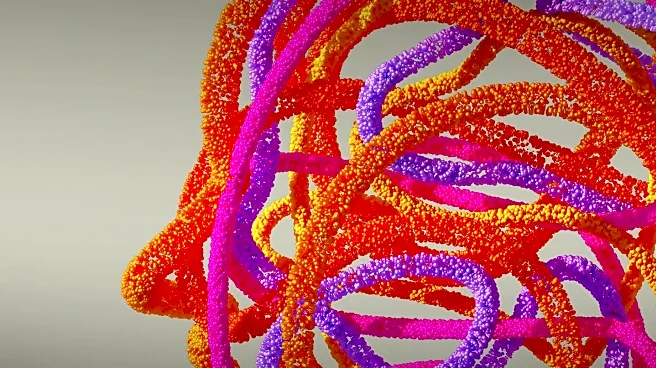What's Happening?
Scientists from Tokyo Metropolitan University have identified a potential method to prevent Alzheimer's disease by targeting early-stage protein clusters. These clusters, known as tau protein precursors,
form before the harmful fibrils associated with Alzheimer's. By dissolving these precursors, researchers were able to prevent the formation of toxic fibrils, potentially blocking the disease's progression. The study utilized precise X-ray and fluorescence methods to identify these microscopic precursors, which measured only tens of nanometers. The findings suggest a shift in Alzheimer's treatment strategies, focusing on preventing the formation of harmful structures rather than breaking apart existing fibrils. This approach could also be applied to other neurodegenerative diseases like Parkinson's. However, the study was conducted using in-vitro biochemical models, and further research is needed to determine the safety and efficacy of this method in humans.
Why It's Important?
The discovery of a method to halt Alzheimer's progression before symptoms appear could significantly impact the treatment and management of the disease. Alzheimer's affects millions of people worldwide, and current treatments primarily focus on managing symptoms rather than preventing the disease. By targeting the early-stage protein clusters, this new approach offers a promising avenue for developing more effective treatments. If successful, it could reduce the burden on healthcare systems and improve the quality of life for patients and their families. Additionally, the research opens up possibilities for similar strategies in treating other neurodegenerative diseases, potentially leading to breakthroughs in understanding and managing conditions like Parkinson's.
What's Next?
Further research is required to confirm the presence of similar reversible clusters in human brain tissue and to assess the safety and effectiveness of dissolving these clusters in humans. Clinical trials may be necessary to explore the potential of this treatment approach in real-world settings. Researchers will likely investigate the application of this strategy to other neurodegenerative diseases, expanding the scope of its impact. The development of targeted therapies that can dissolve and disrupt tau protein buildup before it forms neurofibrillatory tangles could lead to new treatment protocols and improve patient outcomes.











